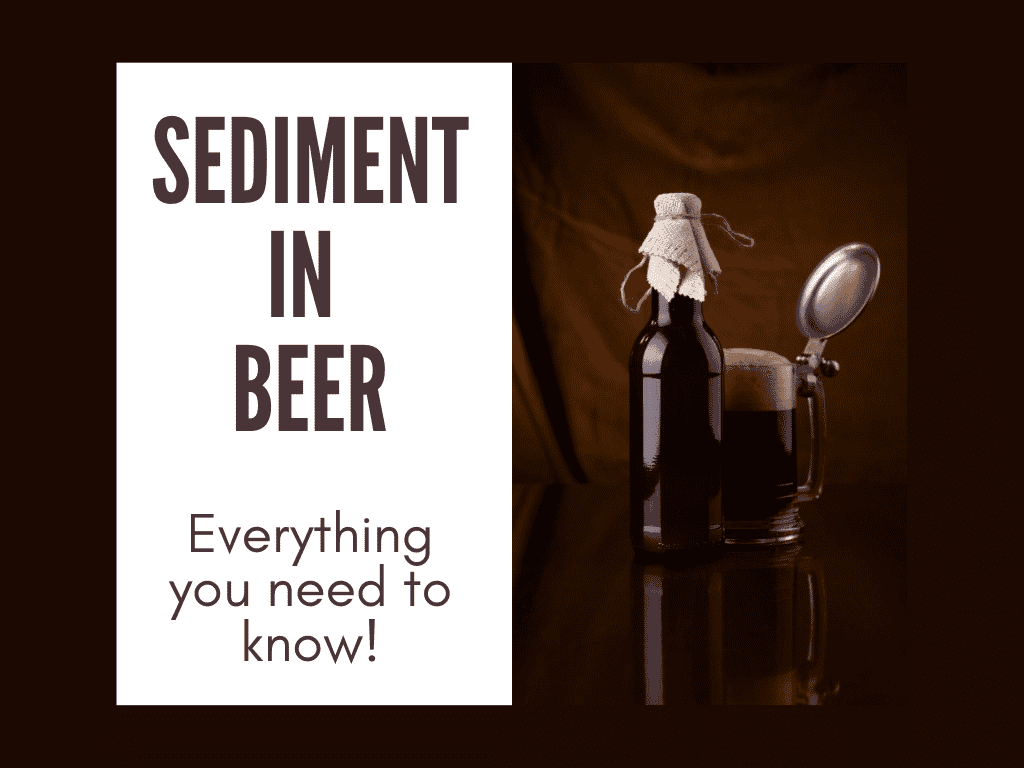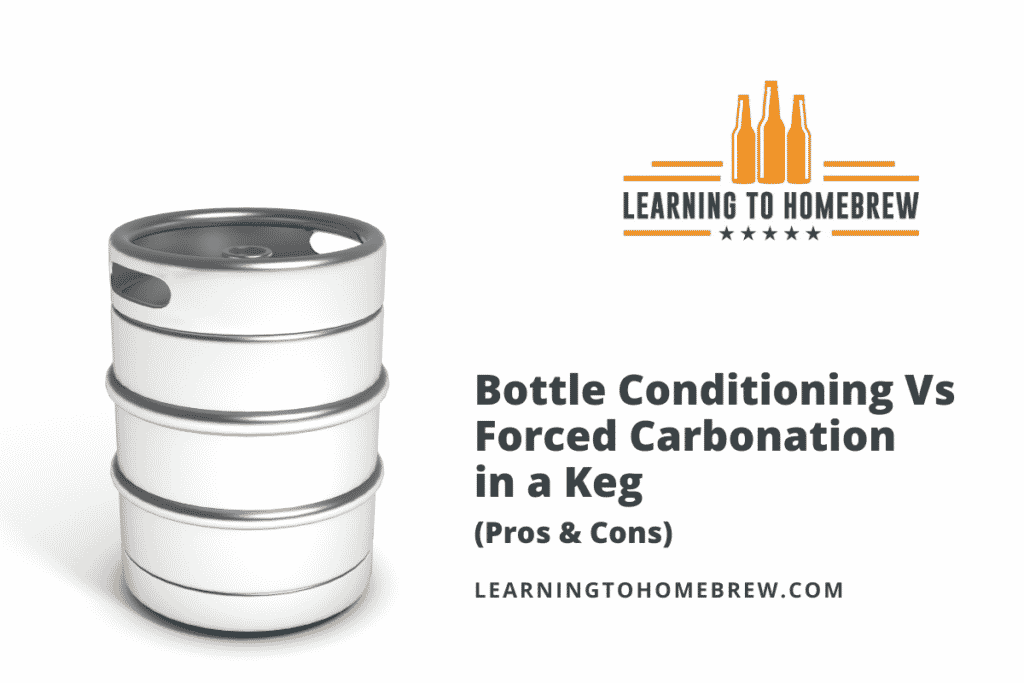Kegging your beer is a huge step for any homebrewer, but it also can be intimidating. Kegging feels like a big step and a lot of beginners have questions about shelf life and best practices for storing their homebrew in a keg.
A keg of homebrew beer can last 6 months or more if stored properly. It should be kept refrigerated, pressurized with CO2, and undisturbed to maximize its shelf life. Any exposure to oxygen will shorten that time to mere hours.
If you’re wondering how homebrew differs from commercial beer, or how exactly to extend the shelf life of a tapped or untapped keg, read on.
Topics We Cover
Does a kegged beer go bad?
Nothing good can last, and good beer is no exception. Whether in a keg, can, or bottle, all beer will eventually spoil in one way or another. The good news is that proper storage practices can go a long way to extending the shelf life of your kegged homebrew.
While kegged beer is at least partially shielded from the elements that are likely to cause the beer to spoil – namely light and air – it will still go bad. A keg of homebrew typically remains fresh for six months, although after that it may start to experience off-flavors. Pasteurized commercial beer in an untapped keg is likely to last 3-6 months, but unpasteurized commercial beer will probably only last 3-6 months.
The lasting freshness of your brew is likely to depend on whether or not it has been pasteurized and whether you’re using a CO2 or manual tap. The easiest way to determine if your beer has spoiled is to test the smell, appearance, and, of course, the taste.
Keep reading to learn more about what calls kegged beer to spoil and the best ways to preserve freshness.
What makes beer go bad
Beer can go bad in a variety of ways. Everything from minor flavor imperfections to major spoilage can occur.
The most likely culprits for spoiled beer are:
- Oxidation
- Flavor changes
- Ultraviolet light
The good news is that kegs keep beer safe from the things that can damage beer the most.
Wondering if beer is still drinkable after it goes bad? Check out this article to find out!
Oxidation
Oxygen naturally breaks down beer, but kegs keep beer safe from exposure to oxygen.
The exception to this is manual pump-style taps, which work by pumping oxygen into the beer. Once tapped with a manual tap, the beer has only hours of freshness left.
Flavor changes
Beer is perishable, and like any perishable good, its flavor will change and evolve over time. Hop aromas and flavors, for example, tend to diminish over time. This is a normal and natural part of beer’s lifespan.
Keeping the beer in an untapped keg will mean maintaining this normal evolution without any undesirable elements.
Ultraviolet light – skunky and lightstruck
Most homebrewers know that light is the enemy of good beer.
Exposure to light can make beer skunky and unpleasant to drink.
It’s very rare for kegged beer to be exposed to light since there are few if any touchpoints where light can get in.
How long does beer last in a keg untapped?
Given proper storage conditions, a keg is one of the best places to store beer.
Depending on the type of beer – homebrew, commercial pasteurized, or commercial unpasteurized – the period of time your beer remains fresh will vary. Homebrew beer will stay fresh in an untapped keg for at least 6 months, whereas commercial beer may last anywhere from 1-6 months.
Homebrew is often fresher than commercial beer and as such, can often be stored for longer.
Homebrew
Even though homebrew isn’t pasteurized, it still can last a decently long time in a keg.
Homebrew typically remains fresh in a keg for 6 months or more. However, once it reaches the 6-month mark, it’s at greater risk for off-flavors.
Bear in mind that it’s kegged and consumed much faster than commercial beer because there’s no transportation time or time in a store involved.
Commercial
It’s a common misconception that commercial beer naturally lasts longer than homebrew. Depending on when the beer was kegged, this is not necessarily true.
The good news is the retailer from which you purchase the keg should be able to share its best by date with you.
Other factors will come into play, such as the style of beer, storage conditions, and whether or not it’s pasteurized.
Pasteurized
Many mass-market breweries like Budweiser, Coors, and Miller pasteurize their beers to eliminate microorganisms that cause spoilage.
Pasteurized beers can usually be stored untapped in a keg for 3-6 months.
Unpasteurized
Plenty of commercial beers are unpasteurized, perhaps more than one would think. In some cases, like Sam Adams, bottled beers are pasteurized but kegged beer is not.
Unpasteurized beer has a shorter shelf life inside the keg than pasteurized beer. Typically, unpasteurized commercial beer can be stored in an untapped keg for 1-3 months.
Sometimes, the label on the keg will indicate whether the beer is pasteurized or not. If not, contact the brewery to confirm.
How long are kegs good for once tapped?
Kegs are one of the best options for storing homebrew long-term because, when stored properly, they keep the beer from being exposed to light or oxygen.
If properly stored and unexposed to air, a keg of homebrew (or commercial beer) can last for months, even after being tapped with a CO2 system. If tapped with a manual air pump, however, the beer will last for only a matter of hours.
Using carbon dioxide (CO2)
The most popular tap choice for homebrewers and beer aficionados is to use a CO2 tank to dispense beer from the keg.
CO2 tanks are the best way to dispense kegged beer because they don’t introduce any oxygen into the beer. By using CO2, which is already naturally present in beer, kegged beer stays fresher longer.
Setting up a kegerator with a CO2 connection can be intimidating, but it’s easy if you follow some simple steps. At a high level, all you’ll have to do is connect a gas line from a CO2 tank to your keg, and a beer line from your keg to the tap handle. Use a regulator to measure and adjust the gas pressure accordingly.
Using a picnic or party pump
Many partygoers are familiar with the picnic or party pump style of keg tap. These are popular because they’re relatively easy to set up and use.
These taps work by pumping oxygen into the beer, forcing it out through the line and into your cup. This is a very efficient way to dispense beer, but exposure to oxygen means your beer will begin to go stale immediately after it’s been tapped.
Kegs that have been tapped with a party pump are generally fresh for 8 hours or less.
Can a keg be tapped twice?
Kegs can only be tapped multiple times using a CO2 connection.
Manual “pump-style” taps introduce oxygen into the beer to force it out of the keg, which means the beer will only stay fresh for a few hours.
How do you know when a keg of beer has gone bad?
If you have a keg of homebrew on your hands that is more than a couple of months old, or has been exposed to heat or oxygen, you will want to confirm it hasn’t gone bad before serving it or drinking it yourself.
The easiest way to determine if a beer has gone bad is to pour a bit of the beer in a glass and assess the following:
- Smell – One of the most obvious signs of beer spoilage is a foul smell. If your beer smells skunky, papery, or musty, it’s likely gone bad.
- Sight – If your beer has become unexpectedly cloudy or has other clear signs of spoilage like mold in it, dispose of it immediately. Similarly, if it lacks the bubbles from carbonation, it has probably gone flat.
- Taste – If it smells like beer and looks like beer, give it a taste! Off flavors are usually pretty obvious. Papery, musty, or extra-acidic flavors are a telltale sign of bad beer.
How to make a keg last longer without going bad
Extending a keg’s shelf life is all about following proper storage procedures. Just like cans and bottles, kegs are susceptible to heat, oxygen, and excessive motion.
Here are the best ways to keep your kegged beer lasting longer:
- Keep the keg cold (ideally in a kegerator)
- Maintain pressure
- Minimize motion / let the keg settle
Read on for more details on each of these tips.
Looking for more tips on storing beer? I’ve got six great tips on storing bottled beer in this article.
Keep the keg cold
The ideal long-term storage temperature for kegged homebrew is 38°F. This is right around the temperature of your average refrigerator. If the temperature of your keg reaches even the mid-40s, spoilage can occur. If it gets too cold, the beer can freeze.
Because of ambient temperature fluctuations in garages, basements, and other chilly spaces, it’s best to keep your keg in a kegerator or spare refrigerator.
Maintain pressure
Without constant pressure from a CO2 connection, your kegged beer will go flat.
On average, most beer should be kept at 10-14 PSI, but that varies based on beer style. Maintaining tight CO2 connections also keeps oxygen out of the beer, which can cause spoilage and off-flavors.
Here is a good resource for PSI variations between common styles of homebrew. Ales can be kept a little below average, whereas Belgian beers and light pilsners should be kept under slightly higher pressure.
Minimize motion
We’ve all had the experience of opening a can of beer after it’s been dropped or shaken. The same thing can happen to kegged beer if it’s moved around too much.
Let your beer settle for at least an hour after putting the keg in place. Too much agitation will cause it to pour with too much foam.





